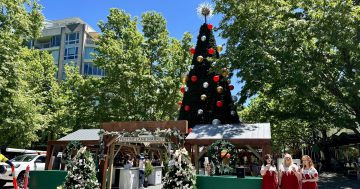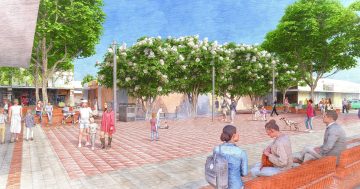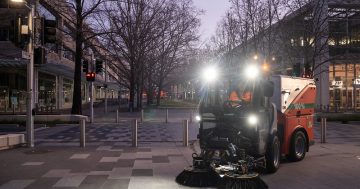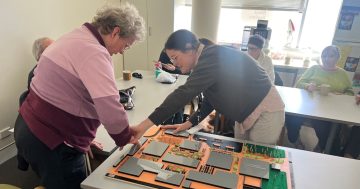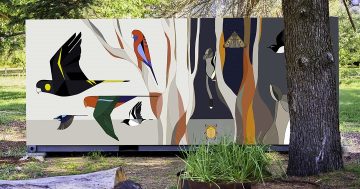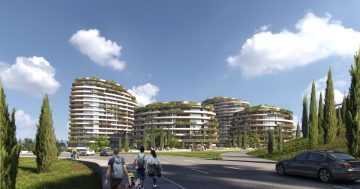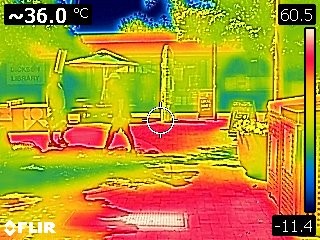
Dickson Shops on a hot summer’s day. Photo: CRA.
Canberra’s version of WALL-E is back from its ramble through Civic and Dickson, with some findings on how to make Canberra cooler.
‘MaRTy’, derived from ‘mean radiant temperature’, was employed by the City Renewal Authority (CRA) to spend several months rolling through Civic Square, Ainslie Place, City Walk, Garema Place and the city bus interchange as part of a study with the University of NSW.
Together, they wanted to know what it would take to help keep a city centre cool (temperature-wise, that is).
The technology was developed in 2016 in Phoenix, Arizona, and this was the first time it’s been deployed in Australia. The study was led by environmental consultants Mosaic Insights in collaboration with the Climate Resilient Cities Lab at UNSW.
MaRTy’s job was to track a typical pedestrian journey through the city to see what it felt like to be a human walking through these areas.
It measured air temperature, humidity, wind speed and solar radiation along the way, and also picked up heat emitted from surrounding surfaces like the pavement, building walls and even shade awnings.
“The urban heat island effect is the change brought about through urbanisation, buildings, roads and infrastructure,” Dr Negin Nazarian from UNSW explained in February when MaRTy arrived in Canberra.
“In urban environments, radiation and heat reach us from direct sunlight, but reflected sunlight also reaches us from surfaces.
“Many built materials such as bricks, asphalt and concrete amplify the strength of reflected heat from the sun while features like shade, greenery and water bodies can reduce heat.”

The MaRTy robot was invented by US researchers. Photo: CRA.
The findings, revealed last week, highlighted big differences between certain areas of the city. And no surprises for what areas were cooler.
“The researchers found dramatic differences in mean radiant temperatures and heat stress levels at these locations due to trees, building materials, vegetation and shading,” CRA deputy CEO Jennifer Ramsay says.
“For example, on a February day when naturally shaded sites in Ainslie Place, Garema Place, Petrie Plaza and City Walk were 25 degrees Celsius, the mean radiant temperature in Civic Square reached 64 degrees Celsius – a nearly 40-degree difference.”
But shade isn’t everything.
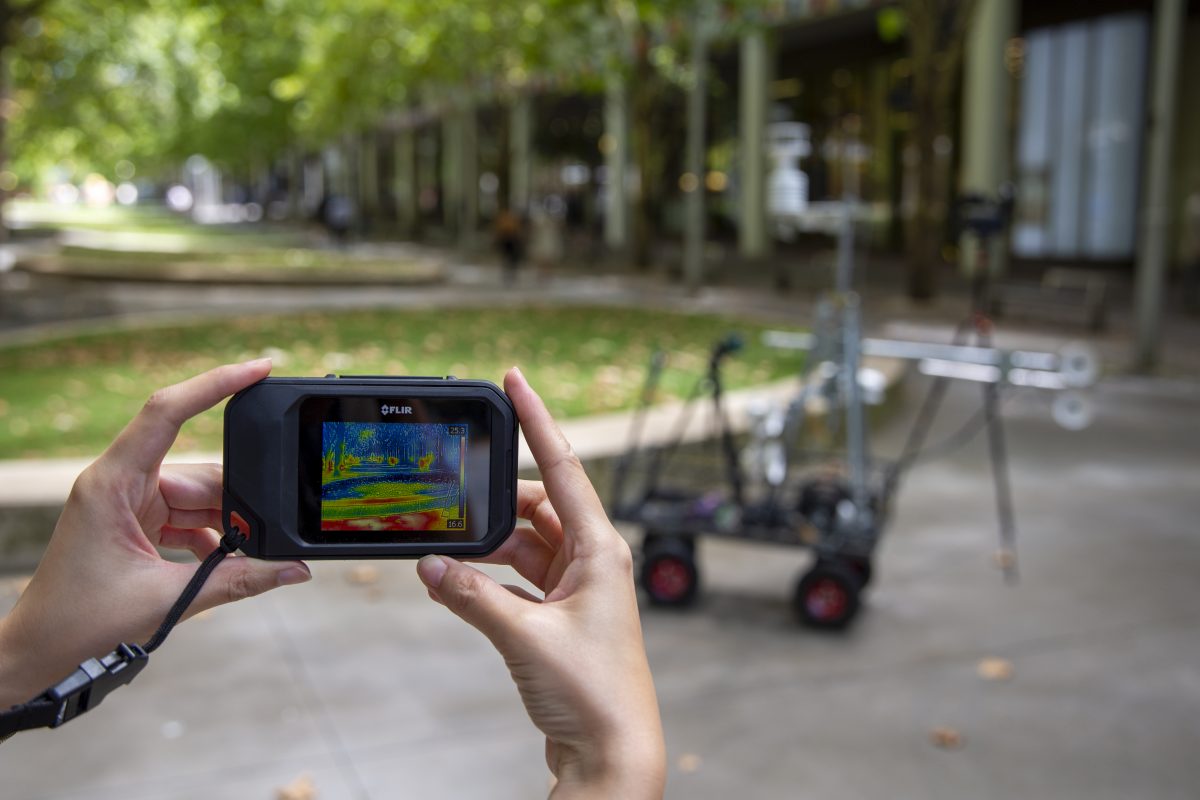
What the camera sees. Photo: City Renewal Authority (CRA).
The report suggests that design should consider lateral heat, not just direct sunlight from above.
This is where building materials come in.
“Light-coloured surfaces, low heat-absorbing pavements and permeable materials all work together to reduce heat gain and create a more comfortable experience,” the CRA says.
For example, the ambient air temperature beneath awnings at Dickson Shops averaged between 29 degrees and 40 degrees and under trees lower at 30 degrees. The open shopping areas were up between 50.5 and 55.5 degrees.
As for the area around water features like the fountain on City Walk?
“While fountains can provide a welcome perception of coolness, their impact on air temperature is localised,” the CRA says.
In other words, they don’t make much difference. The report does suggest using features like water-misting systems for special events or in areas where trees aren’t practical.

Water features don’t make much of a difference to ambient temperature. Photo: City Renewal Authority (CRA).
The CRA is working towards a minimum 30 per cent tree canopy cover across its precinct as part of the local government’s broader target for 30 per cent tree cover across the ACT by 2045.
Ms Ramsay says the other recommendations are “already informing” works to upgrade the public spaces in places like Civic and Dickson.
“For example, we have increased the size of planted areas and permeable surfaces for our upcoming Garema Place upgrade in response to its findings,” she said.
“We have also reconsidered the colour of paving to minimise the impact on mean radiant temperature and resulting heat stress.”
As for MaRTy, he’s not finished yet.
“The Authority plans to repeat the thermal comfort study in the coming years following planned public realm upgrades,” Ms Ramsay said.













